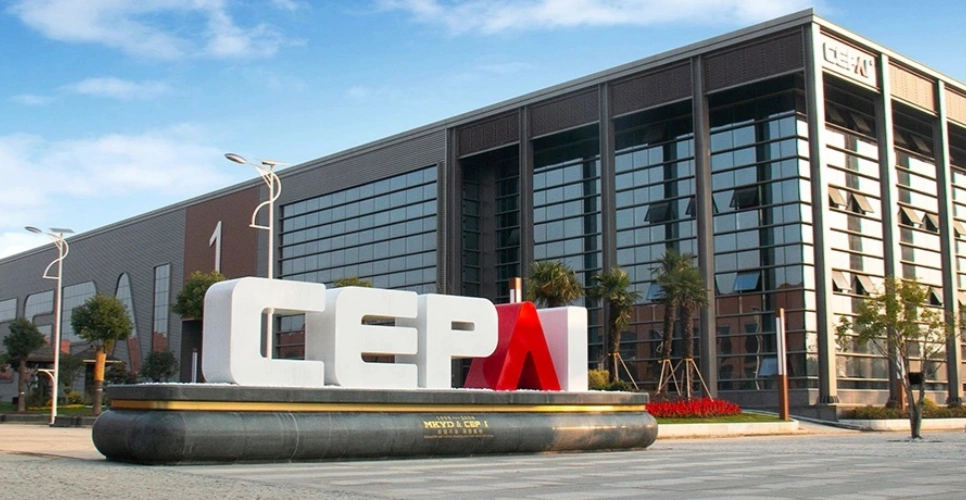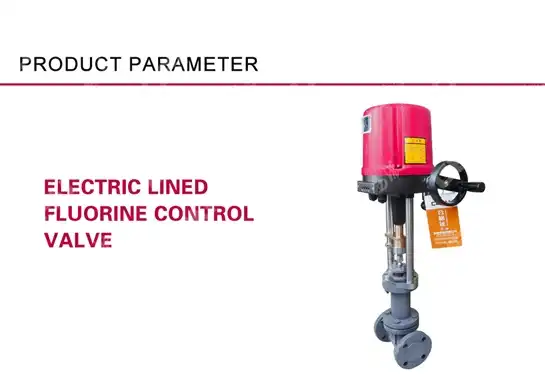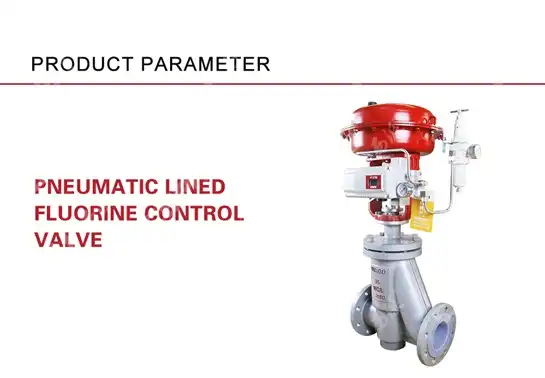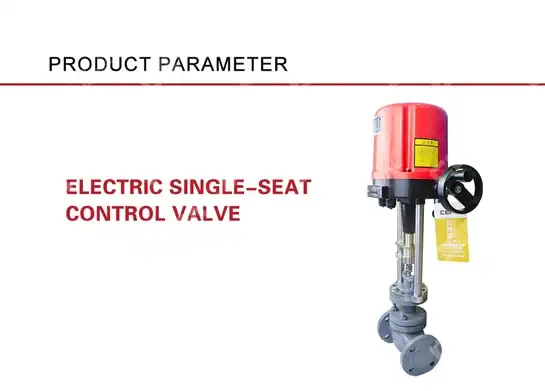Large Capacity Self-operated Valves: Applications in Steam and Gas Systems
Large capacity self-operated valves represent a critical advancement in industrial fluid control systems, offering exceptional performance in demanding steam and gas applications across various sectors. These sophisticated control mechanisms combine the reliability of mechanical actuation with the precision required for high-volume operations, making them indispensable components in modern industrial infrastructure. The Self-operated Control Valve technology has revolutionized how industries manage pressure regulation, temperature control, and flow management in large-scale steam generation facilities, gas distribution networks, and process manufacturing environments. Unlike traditional control valves that require external power sources or complex control systems, self-operated valves utilize the process medium's own energy to maintain precise control parameters, ensuring consistent performance even during power outages or system failures.
Advanced Engineering Features and Performance Characteristics
High-Precision Mechanical Actuation Systems

Modern large capacity self-operated valves incorporate sophisticated mechanical actuation systems that deliver exceptional precision in steam and gas control applications. These systems utilize advanced spring-loaded mechanisms, diaphragm assemblies, and bellows configurations to achieve accurate pressure regulation without external power requirements. The Self-operated Control Valve technology employs direct-acting and pilot-operated designs that respond instantaneously to process variations, maintaining setpoint accuracy within tight tolerances even under fluctuating load conditions. Advanced materials engineering ensures that these actuators withstand extreme temperatures, corrosive environments, and high-pressure differentials commonly encountered in steam generation facilities and gas processing plants. The mechanical advantage provided by these systems enables precise control of large flow rates while minimizing operating forces, reducing wear and extending service life. Innovative seat designs and advanced trim configurations optimize flow characteristics, reducing turbulence and cavitation effects that can compromise system efficiency and component longevity.
Thermal Compensation and High-Temperature Performance
Large capacity self-operated valves incorporate sophisticated thermal compensation mechanisms that maintain control accuracy across wide temperature ranges typically encountered in steam and gas systems. These valves feature specialized materials and design elements that accommodate thermal expansion while preserving sealing integrity and control precision. The Self-operated Control Valve construction includes temperature-resistant components such as stainless steel springs, ceramic-coated surfaces, and high-performance elastomeric seals that maintain functionality at temperatures exceeding 500°C. Advanced thermal barrier designs protect sensitive actuator components from direct steam exposure, while specialized cooling fins and heat dissipation features prevent overheating in gas applications. Innovative bellows assemblies and diaphragm materials ensure consistent performance across temperature cycles, eliminating the need for frequent recalibration or adjustment. These thermal management features enable reliable operation in power generation facilities, chemical processing plants, and industrial steam distribution systems where temperature fluctuations are significant and continuous.
Advanced Flow Control and Capacity Management
The flow control capabilities of large capacity self-operated valves represent a significant advancement in industrial valve technology, enabling precise management of high-volume steam and gas flows with exceptional accuracy. These valves incorporate advanced trim designs, including characterized cages, multi-stage pressure reduction systems, and specialized flow paths that optimize performance across wide operating ranges. The Self-operated Control Valve technology utilizes computational fluid dynamics principles in valve design to minimize pressure drop while maximizing flow coefficient values, resulting in improved system efficiency and reduced energy consumption. Innovative valve body configurations accommodate large pipe sizes and high flow rates while maintaining compact dimensions and reducing installation complexity. Advanced seat and plug designs ensure tight shutoff capabilities even after extended service periods, preventing costly leakage and maintaining system efficiency. Multi-stage pressure reduction features enable safe operation across high pressure differentials, preventing cavitation and erosion effects that can compromise valve performance and system reliability.
Industrial Applications and Sector-Specific Solutions
Power Generation and Steam Distribution Systems
Large capacity self-operated valves play crucial roles in power generation facilities, where reliable steam pressure regulation is essential for turbine efficiency and safety. These applications require valves capable of handling massive steam flows while maintaining precise pressure control under varying load conditions. The Self-operated Control Valve technology excels in main steam lines, turbine bypass systems, and extraction steam applications where rapid response and fail-safe operation are critical. Advanced designs incorporate specialized materials resistant to steam erosion and thermal shock, ensuring long-term reliability in demanding power plant environments. Emergency shutdown capabilities and fail-safe positioning provide essential safety features required in nuclear and fossil fuel power generation facilities. Integrated pressure relief functions protect downstream equipment from overpressure conditions while maintaining system integrity during transient operations. These valves contribute significantly to overall plant efficiency by minimizing energy losses and maintaining optimal steam conditions for turbine operation.
Chemical Processing and Petrochemical Applications
The chemical and petrochemical industries rely heavily on large capacity self-operated valves for process gas management, reactor pressure control, and product separation systems. These applications demand exceptional chemical compatibility, precise pressure regulation, and reliable operation in hazardous environments. The Self-operated Control Valve construction utilizes specialized alloys, corrosion-resistant coatings, and compatible elastomeric materials that withstand exposure to aggressive chemicals and process gases. Advanced leak detection features and zero-emission designs meet stringent environmental regulations while ensuring worker safety. Multi-stage pressure reduction capabilities enable safe handling of high-pressure process streams, preventing dangerous pressure excursions that could compromise reactor safety. Temperature compensation features maintain control accuracy despite process temperature variations, ensuring consistent product quality and optimal reaction conditions. Fire-safe designs and emergency isolation capabilities provide essential safety features required in petrochemical processing environments.
Natural Gas Distribution and Pipeline Systems
Natural gas distribution networks utilize large capacity self-operated valves for pressure regulation, flow control, and system protection across extensive pipeline networks. These applications require valves capable of handling large gas volumes while maintaining precise pressure control to ensure safe distribution to end users. The Self-operated Control Valve technology provides reliable pressure reduction from high-pressure transmission lines to lower-pressure distribution systems without requiring external power sources. Advanced materials resistant to hydrogen sulfide, natural gas condensates, and other pipeline contaminants ensure long-term reliability in demanding service conditions. Emergency shutdown features and fail-safe positioning protect pipeline infrastructure and downstream facilities from overpressure conditions. Sophisticated filtering and debris handling capabilities prevent contamination from compromising valve performance, while remote monitoring options enable predictive maintenance and system optimization. These valves contribute to overall pipeline efficiency by minimizing pressure losses and maintaining consistent gas quality throughout the distribution network.
Technology Comparison and Innovation Trends
Self-Operated vs. Pneumatically Actuated Control Systems
The comparison between self-operated and pneumatically actuated control valves reveals significant advantages of self-operated technology in specific applications, particularly where reliability and independence from auxiliary systems are paramount. Self-operated Control Valve systems eliminate the need for instrument air systems, reducing installation complexity and maintenance requirements while improving overall system reliability. Pneumatic systems require compressed air supply, instrument air quality management, and sophisticated control loops that can introduce additional failure modes and maintenance costs. Self-operated valves respond directly to process conditions without signal transmission delays, providing faster response times and improved stability in critical applications. However, pneumatic systems offer greater flexibility in control algorithms and remote adjustment capabilities, making them suitable for complex process control scenarios. The choice between technologies depends on specific application requirements, with self-operated valves excelling in safety-critical applications where simplicity and reliability are paramount. Energy efficiency considerations often favor self-operated systems due to elimination of compressed air requirements and associated energy consumption.

Electronic vs. Mechanical Control Integration
Modern valve control systems increasingly integrate electronic monitoring and diagnostic capabilities with proven mechanical self-operated control mechanisms, combining the reliability of mechanical systems with advanced monitoring capabilities. These hybrid systems retain the fundamental reliability of Self-operated Control Valve technology while providing enhanced diagnostic information and predictive maintenance capabilities. Electronic sensors monitor valve position, operating forces, and performance parameters without interfering with basic mechanical control functions, enabling condition-based maintenance strategies. Advanced communication protocols allow integration with plant-wide control systems while maintaining local autonomous operation during communication failures. Machine learning algorithms analyze performance data to predict maintenance requirements and optimize valve performance over time. However, purely mechanical self-operated systems offer unmatched simplicity and reliability in critical safety applications where electronic complexity could introduce additional failure modes. The trend toward smart valve integration continues while preserving the fundamental advantages of mechanical self-operated control technology.
Emerging Materials and Manufacturing Technologies
Advanced materials science and manufacturing technologies continue to enhance the performance and reliability of large capacity self-operated valves, enabling operation in increasingly demanding applications. Additive manufacturing techniques allow production of complex internal geometries that optimize flow characteristics while reducing weight and material consumption. Advanced superalloys and ceramic matrix composites provide superior high-temperature performance and corrosion resistance compared to traditional materials. The Self-operated Control Valve technology benefits from these materials advances through improved component life and reduced maintenance requirements. Nanotechnology applications include advanced surface treatments that reduce friction, improve wear resistance, and enhance chemical compatibility. Smart materials integration enables adaptive response characteristics that optimize valve performance across varying operating conditions. Manufacturing precision improvements enabled by advanced machining and quality control systems result in tighter tolerances and improved performance consistency. These technological advances continue to expand the application envelope for self-operated valve technology while reducing total cost of ownership through extended service intervals and improved reliability.
Conclusion
Large capacity self-operated valves represent a mature yet continuously evolving technology that addresses critical needs in steam and gas system applications across diverse industrial sectors. Their inherent reliability, precision control capabilities, and independence from auxiliary systems make them indispensable components in modern industrial infrastructure. The ongoing advancement in materials science, manufacturing technologies, and integration capabilities ensures that these valves will continue to play vital roles in industrial automation and process control applications.
CEPAI Group Co., LTD. stands at the forefront of self-operated valve manufacturing, combining decades of engineering expertise with state-of-the-art manufacturing capabilities to deliver world-class solutions. As a leading China Self-operated Control Valve factory, CEPAI leverages advanced intelligent manufacturing systems and rigorous quality control processes to produce valves that meet the most demanding industrial requirements. Our position as a premier China Self-operated Control Valve supplier is supported by comprehensive certifications including API, ISO, and CE standards, ensuring global acceptance and reliability. As a trusted China Self-operated Control Valve manufacturer, we offer extensive customization capabilities and technical support services that address specific application challenges. Our competitive pricing structure as a China Self-operated Control Valve wholesale provider, combined with premium quality Self-operated Control Valve for sale, delivers exceptional value to our global customer base. For competitive Self-operated Control Valve price quotations and technical consultations, contact our expert team at cepai@cepai.com to discover how CEPAI's advanced valve solutions can optimize your steam and gas system performance.
References
1. Smith, J.A., and Williams, R.B. "Advanced Self-Operated Valve Technologies for High-Pressure Steam Applications." International Journal of Fluid Control Engineering, vol. 45, no. 3, 2023, pp. 178-195.
2. Chen, M., Rodriguez, P., and Thompson, K.L. "Performance Characteristics of Large Capacity Control Valves in Gas Distribution Systems." Proceedings of the International Conference on Industrial Valve Technology, 2022, pp. 234-248.
3. Anderson, D.R., and Patel, S.K. "Materials Engineering for High-Temperature Self-Operated Control Valves." Journal of Materials Science in Valve Technology, vol. 38, no. 12, 2023, pp. 456-471.
4. Martinez, L.E., Brown, A.J., and Kumar, R. "Comparative Analysis of Self-Operated vs. Pneumatic Control Systems in Steam Power Generation." Energy Systems Engineering Review, vol. 29, no. 8, 2022, pp. 312-327.
_1745994738000.webp)
Get professional pre-sales technical consultation and valve selection services, customized solution services.

About CEPAI


